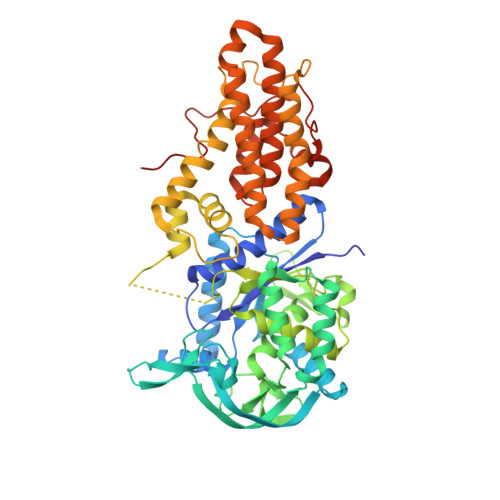From Cells to Mice to Target: Characterization of NEU-1053 (SB-443342) and Its Analogues for Treatment of Human African Trypanosomiasis.
Devine, W.G., Diaz-Gonzalez, R., Ceballos-Perez, G., Rojas, D., Satoh, T., Tear, W., Ranade, R.M., Barros-Alvarez, X., Hol, W.G., Buckner, F.S., Navarro, M., Pollastri, M.P.(2017) ACS Infect Dis 3: 225-236
- PubMed: 28110521
- DOI: https://doi.org/10.1021/acsinfecdis.6b00202
- Primary Citation of Related Structures:
5TQU - PubMed Abstract:
Human African trypanosomiasis is a neglected tropical disease that is lethal if left untreated. Existing therapeutics have limited efficacy and severe associated toxicities. 2-(2-(((3-((1H-Benzo[d]imidazol-2-yl)amino)propyl)amino)methyl)-4,6-dichloro-1H-indol-1-yl)ethan-1-ol (NEU-1053) has recently been identified from a high-throughput screen of >42,000 compounds as a highly potent and fast-acting trypanocidal agent capable of curing a bloodstream infection of Trypanosoma brucei in mice. We have designed a library of analogues to probe the structure-activity relationship and improve the predicted central nervous system (CNS) exposure of NEU-1053. We report the activity of these inhibitors of T. brucei, the efficacy of NEU-1053 in a murine CNS model of infection, and identification of the target of NEU-1053 via X-ray crystallography.
- Department of Chemistry & Chemical Biology, Northeastern University 360 Huntington Avenue, Boston, Massachusetts, United States.
Organizational Affiliation:




















